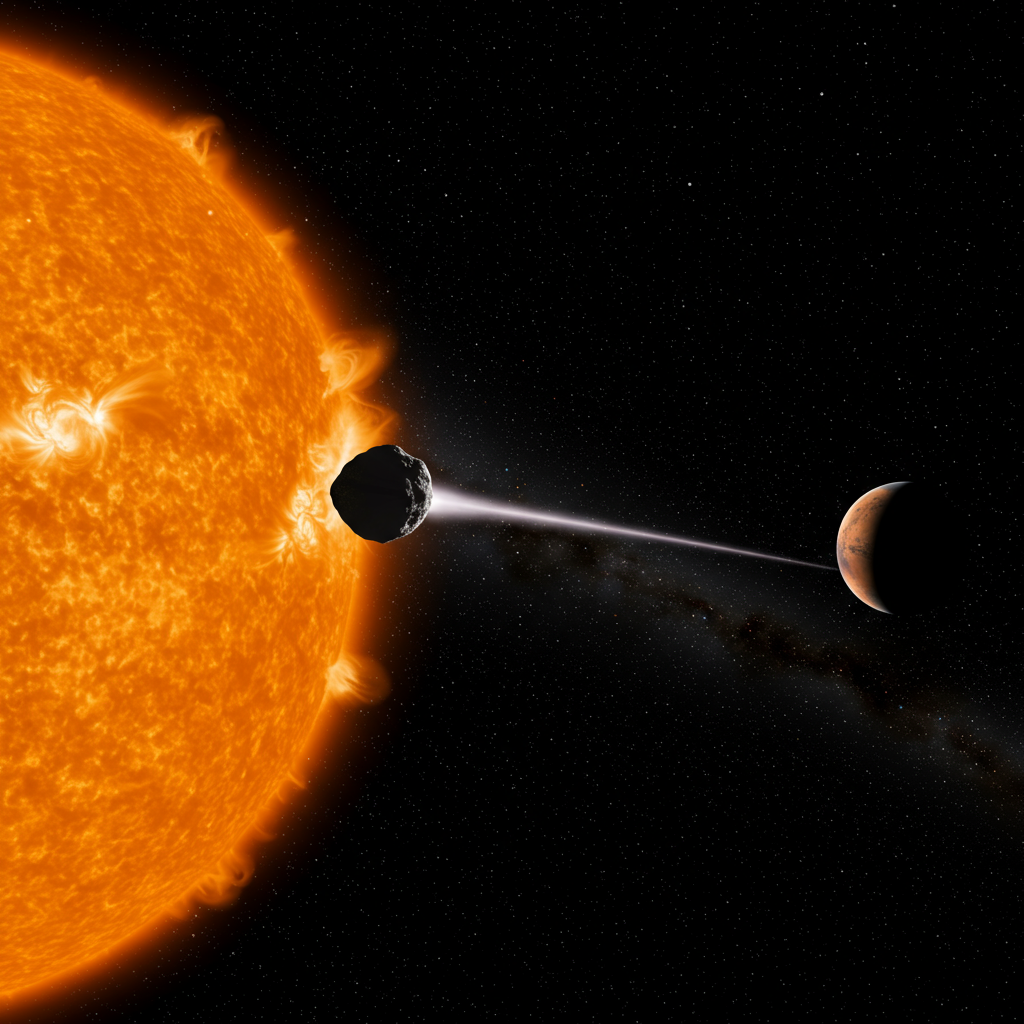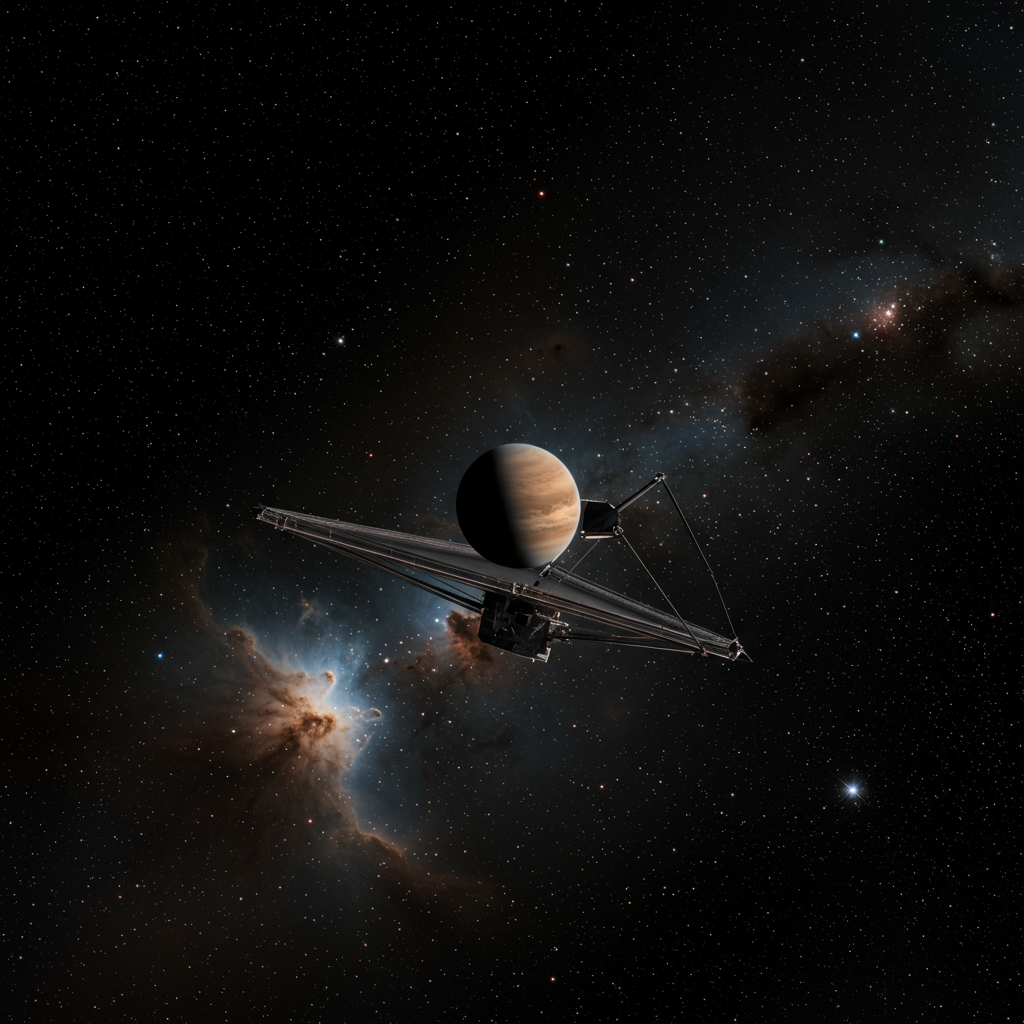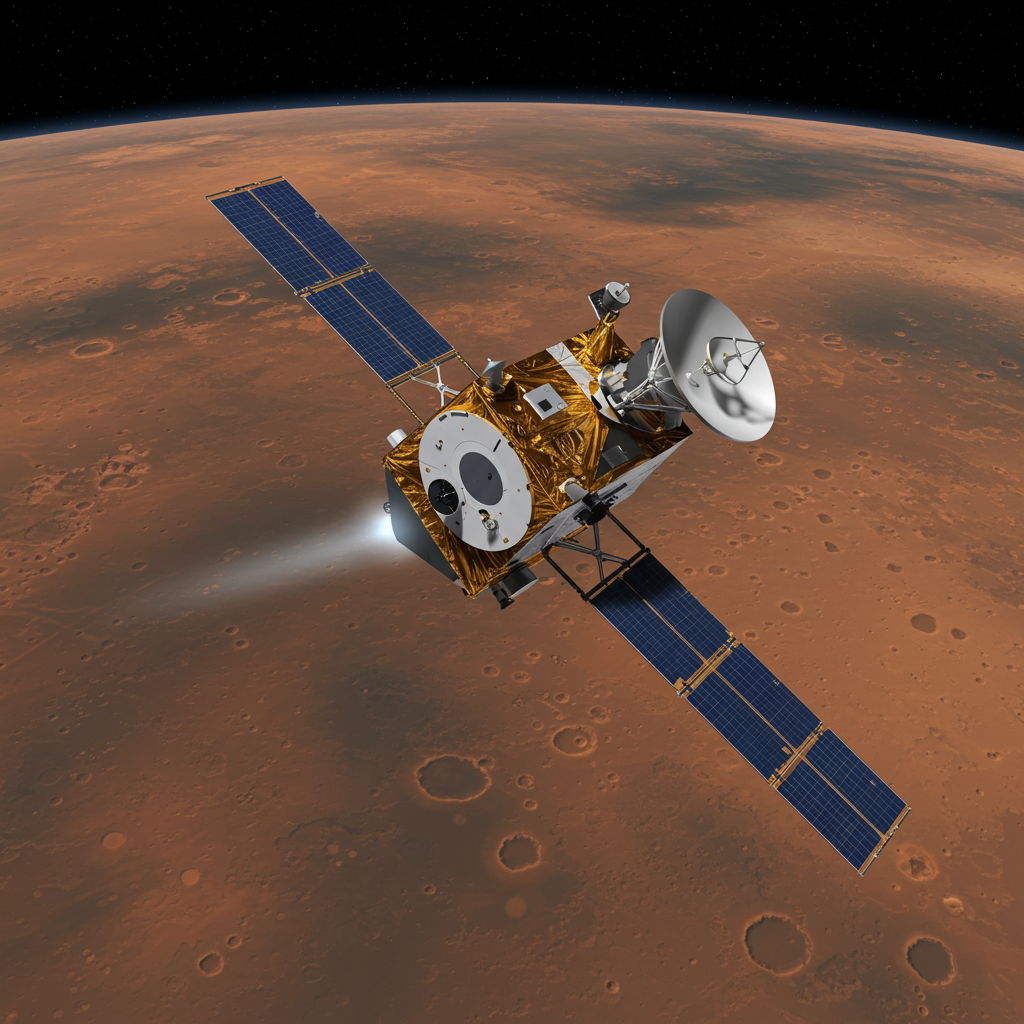Cosmic messengers from other stars are incredibly rare sightings, making each detection a landmark moment in astronomy. Just this week, scientists confirmed the presence of a third known interstellar visitor zooming through our solar neighborhood. This fascinating object, now officially designated 3I/ATLAS, is providing astronomers with exciting new clues about the universe beyond our Sun and hinting at a potential revolution in how we discover these elusive travelers.
The Discovery of 3I/ATLAS
The initial sighting of this cosmic interloper occurred on July 1st. Astronomers using the Asteroid Terrestrial-impact Last Alert system (ATLAS), a NASA-funded survey operating in Hawaii, first spotted the object. It was initially given the temporary name A11pl3Z. Following the ATLAS detection, professional and amateur astronomers worldwide quickly reviewed past telescope data, managing to trace the object’s trajectory back to observations made as early as June 14th.
Swift confirmation followed. Experts at NASA’s Center for Near Earth Object Studies and the International Astronomical Union (IAU) rapidly analyzed the observation data. The IAU’s Minor Planet Center, responsible for cataloging minor bodies in the solar system, accumulated over 100 observations in just a few days, leading to the official designation 3I/ATLAS. The ‘I’ signifies its interstellar origin, and ‘ATLAS’ credits the survey that first found it. This rapid confirmation is itself notable, highlighting advancements in detection and analysis capabilities.
Unmistakable Signs of an Interstellar Origin
How do astronomers know that 3I/ATLAS didn’t originate from within our own Solar System? Two primary pieces of evidence strongly point to its birth around another star: its incredible speed and its unique orbital path.
Blazing Through Space at High Velocity
One of the most compelling indicators of 3I/ATLAS’s interstellar nature is its sheer speed. Current observations show it traveling through space at an estimated velocity of around 245,000 kilometers per hour (or more than 60 kilometers per second). To put this into perspective, an object near Earth’s orbit would only need to be traveling at just over 150,000 kilometers per hour to break free from the Sun’s gravitational pull and escape the Solar System entirely.
3I/ATLAS is moving significantly faster than this escape velocity. Its trajectory isn’t curved into an orbit around the Sun; instead, it follows a path that brings it into our system and will carry it back out into the vast expanse of interstellar space, never to return.
An Orbit Unlike Any Other
The object’s orbital path around the Sun provides the second crucial piece of evidence. Astronomers describe orbits using a property called eccentricity, which measures how stretched an orbit is. A value of 0 indicates a perfect circle, while values between 0 and 1 represent increasingly elongated ellipses, like the paths of planets and most asteroids. An eccentricity value of exactly 1 corresponds to a parabolic escape trajectory, and values above 1 describe hyperbolic paths, meaning the object is not gravitationally bound to the central body (in this case, the Sun).
The estimated orbital eccentricity for 3I/ATLAS is an astonishing 6.3. This is by far the highest eccentricity ever recorded for any object observed within our Solar System. This extremely high value is definitive proof that 3I/ATLAS is not orbiting our Sun and originated from beyond its gravitational influence.
A Brief History of Interstellar Visitors
While 3I/ATLAS is the third confirmed interstellar object to be detected passing through our Solar System, the concept of such visitors has long been a topic of scientific speculation. Their actual detection is a relatively recent phenomenon.
The First Breakthroughs
The first confirmed interstellar visitor, named 1I/’Oumuamua, was discovered in 2017 by the Pan-STARRS1 telescope in Hawaii. ‘Oumuamua was unusual not only for its origin but also its appearance; observations suggested it had a highly elongated, cigar-like shape. Scientists tracked ‘Oumuamua for about 80 days before definitively confirming its interstellar trajectory.
Just two years later, in 2019, the second interstellar object was found. This visitor, a comet named 2I/Borisov, was discovered by amateur astronomer Gennadiy Borisov. Unlike ‘Oumuamua, 2I/Borisov displayed typical comet-like features, including a visible coma and tail. Astronomers were able to confirm its interstellar origin much faster than ‘Oumuamua, within just a few weeks.
The speed at which 3I/ATLAS’s interstellar origin was confirmed – in a matter of days – highlights the rapid advancements in astronomical observation, data processing, and the collaborative efforts of scientists worldwide compared to the first two detections. Some astronomers, like Mark Norris at the University of Central Lancashire, noted that 3I/ATLAS appeared to be moving considerably faster than both ‘Oumuamua and 2I/Borisov.
Where Do These Cosmic Nomads Come From?
The detection of even a few interstellar objects raises profound questions about their origins and frequency throughout the galaxy. How did these objects get flung from their home star systems and embark on solo journeys through vast cosmic distances?
While we’ve only observed a handful of these visitors, providing limited data points, recent research is starting to shed light on the possibilities. A study published in The Planetary Science Journal suggests that such objects might be far more common than previously believed. This research specifically points to nearby star systems, such as Alpha Centauri, as potential sources.
Alpha Centauri: A Nearby Candidate
Alpha Centauri is the closest star system to our own, located a mere 4.4 light years away. The study posits that star systems like Alpha Centauri could potentially eject material during their formation or later dynamical processes. Alpha Centauri is even slowly moving closer to our Solar System, with its closest approach anticipated in roughly 28,000 years.
Scientists involved in the study estimate that if Alpha Centauri flings out material similarly to our Sun, around a million objects larger than 100 meters in diameter originating from that system could already be residing in the outer reaches of our Solar System. This number could increase tenfold as Alpha Centauri makes its closer approach. However, the study notes that most material ejected from such systems would likely be at relatively low speeds, generally less than 2 kilometers per second. This lower velocity would cause objects to drift into our cosmic neighborhood over extended periods rather than dramatically zooming through like 3I/ATLAS. Despite the lower speeds for larger objects, the research suggests that tiny meteors, perhaps no bigger than grains of sand, originating from Alpha Centauri might already be hitting Earth’s atmosphere every year.
This research indicates that our Solar System is likely peppered with interstellar material, even if only a small fraction are large, fast-moving visitors detectable with current technology.
The Profound Significance of Interstellar Visitors
Why are astronomers so thrilled about detecting objects like 3I/ATLAS? These visitors offer a unique and invaluable window into the composition and processes occurring in star systems light-years away.
Each confirmed interstellar object adds to a small but growing catalog of cosmic samples from beyond our stellar neighborhood. Studying their properties – their composition, size, shape, and trajectory – helps scientists build a better understanding of the diversity of objects forming around other stars, how planetary systems evolve, and how material might travel across the galaxy. They are direct messengers carrying potentially pristine material from other star systems. The possibility of detecting precursors to life, such as complex organic molecules or amino acids, on such an object would hold immense scientific significance, increasing confidence that conditions suitable for life exist elsewhere in the universe.
ushering in a New Era of Cosmic Discovery
While detecting interstellar objects is currently a rare event, this is poised to change dramatically thanks to the advent of powerful new astronomical observatories. Our ability to spot these faint, fast-moving visitors is rapidly improving.
One instrument expected to revolutionize the search is the NSF–DOE Vera C. Rubin Observatory in Chile. Currently undergoing final preparations, Rubin is designed to conduct a decade-long survey of the southern night sky called the Legacy Survey of Space and Time (LSST). Its wide field of view and constant, deep scans of the sky make it uniquely suited to finding transient and moving objects that previous telescopes might have missed.
The potential of Rubin was previewed during its initial test imaging phase. In just 10 hours of test observations, the observatory revealed 2,104 previously unknown asteroids within our own Solar System – an astonishing number for such a short observation time. Experts predict that Rubin will significantly increase the rate of interstellar object discoveries, potentially finding new ones on a monthly basis. This will transform the detection of interstellar visitors from rare occurrences into a routine part of astronomical observation, providing a flood of new data about our galactic neighbors. Mark Norris noted that Rubin is expected to particularly excel at finding dimmer interstellar visitors.
3I/ATLAS: Comet or Asteroid?
Even as astronomers track its path, the exact nature of 3I/ATLAS is still under investigation and subject to scientific debate. The IAU Minor Planet Center has officially classified it as a comet based on initial orbital characteristics.
However, some scientists propose it might actually be a large asteroid, possibly around 20 kilometers in diameter, based on observations that haven’t shown typical comet features. Comets are usually identifiable by a glowing cloud of gas and dust (a coma) and sometimes a tail, which develop as they approach the Sun and their ice evaporates. The apparent lack of these features around 3I/ATLAS has led some to suggest an asteroidal composition. More observations as the object gets closer to the Sun will be needed to definitively determine whether it exhibits cometary activity or remains dormant like an asteroid. Estimates of its size vary slightly, with some suggesting it could be smaller if composed primarily of ice.
Regardless of its classification as a comet or asteroid, its origin from another star system is clear.
The Journey Continues: 3I/ATLAS’s Path Through Our Solar System
As of this report, 3I/ATLAS is inbound, traveling through the outer Solar System and currently located just inside the orbit of Jupiter. Its trajectory will bring it deep into the inner Solar System.
It is expected to reach its closest point to the Sun, known as perihelion, on October 29th, 2025. At its closest approach to the Sun, 3I/ATLAS will be slightly closer than the planet Mars’s orbit. After rounding the Sun, the object will then begin its journey back out towards the cold, dark expanse of deep interstellar space. It is projected to make its closest approach to Earth sometime in December 2025. Scientists have confirmed that 3I/ATLAS will pose no threat to our planet during its passage.
Its visit is brief, but its scientific value is immense. Like ‘Oumuamua and Borisov before it, 3I/ATLAS is a unique messenger, offering astronomers a direct sample and perspective from another star system. While these sightings are currently rare, the dawn of new observatories promises to make interstellar companions a much more frequent and detailed part of our cosmic inventory.
Frequently Asked Questions
What is 3I/ATLAS and why is it considered an interstellar object?
3I/ATLAS is the official designation for a recently discovered object passing through our Solar System. It is considered interstellar because its speed (around 245,000 km/h, or over 60 km/s) is significantly faster than the velocity needed to escape the Sun’s gravity, meaning it is not gravitationally bound to our Sun. Additionally, its orbit has an extremely high eccentricity of 6.3, confirming it is following a hyperbolic path that will take it back out into interstellar space.
How are objects like 3I/ATLAS detected and confirmed?
Interstellar objects are typically detected by wide-field astronomical surveys that constantly scan the sky for moving objects, such as the ATLAS survey in Hawaii which first spotted 3I/ATLAS. Once a potential candidate is found, professional and amateur astronomers worldwide make follow-up observations to determine its precise trajectory and velocity. Organizations like NASA’s Center for Near Earth Object Studies and the International Astronomical Union (IAU) then analyze this data to confirm if the object’s path is unbound to the Sun. This confirmation process, which took days for 3I/ATLAS, is becoming faster with improved technology and coordination.
How will new telescopes change the search for interstellar objects?
Next-generation observatories, particularly the Vera C. Rubin Observatory in Chile, are expected to revolutionize the discovery of interstellar objects. With its vast field of view and ability to repeatedly scan the entire visible sky deeply and quickly, Rubin is uniquely positioned to detect faint, fast-moving objects that were previously hard to find. Experts anticipate that Rubin could increase the detection rate of interstellar visitors from rare occurrences to potentially finding new objects on a monthly basis, providing astronomers with a wealth of data to study.
Word Count Check: 1382




